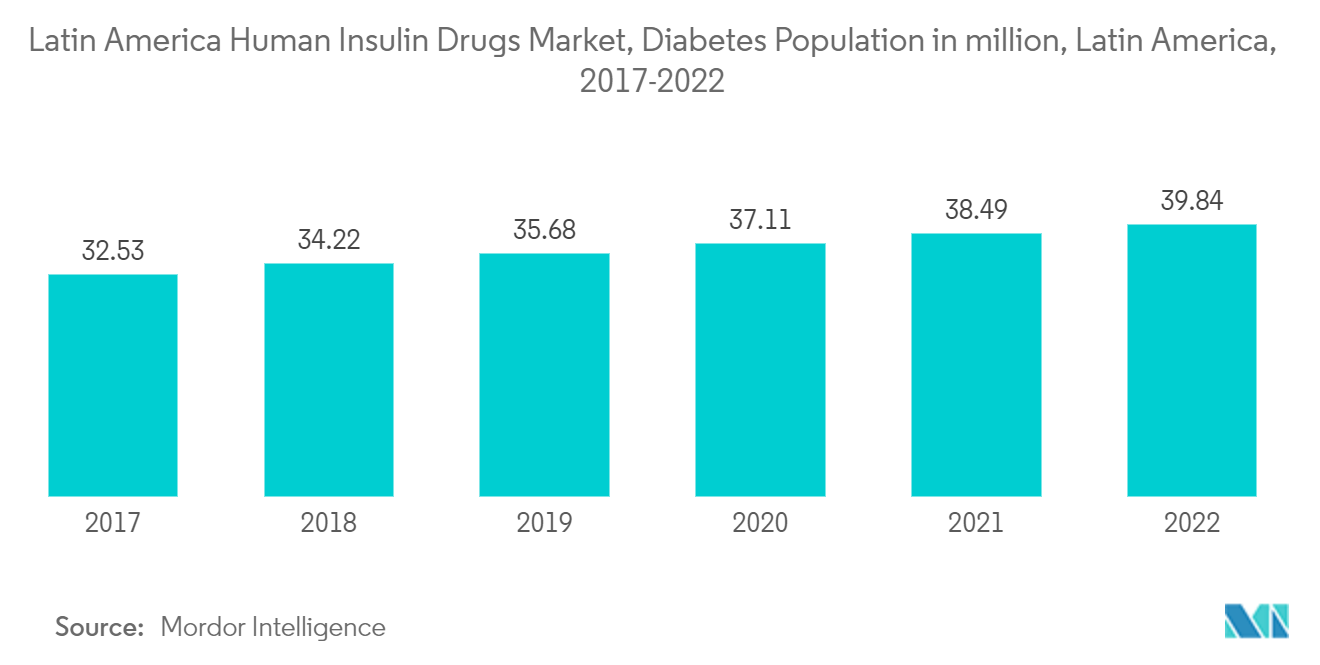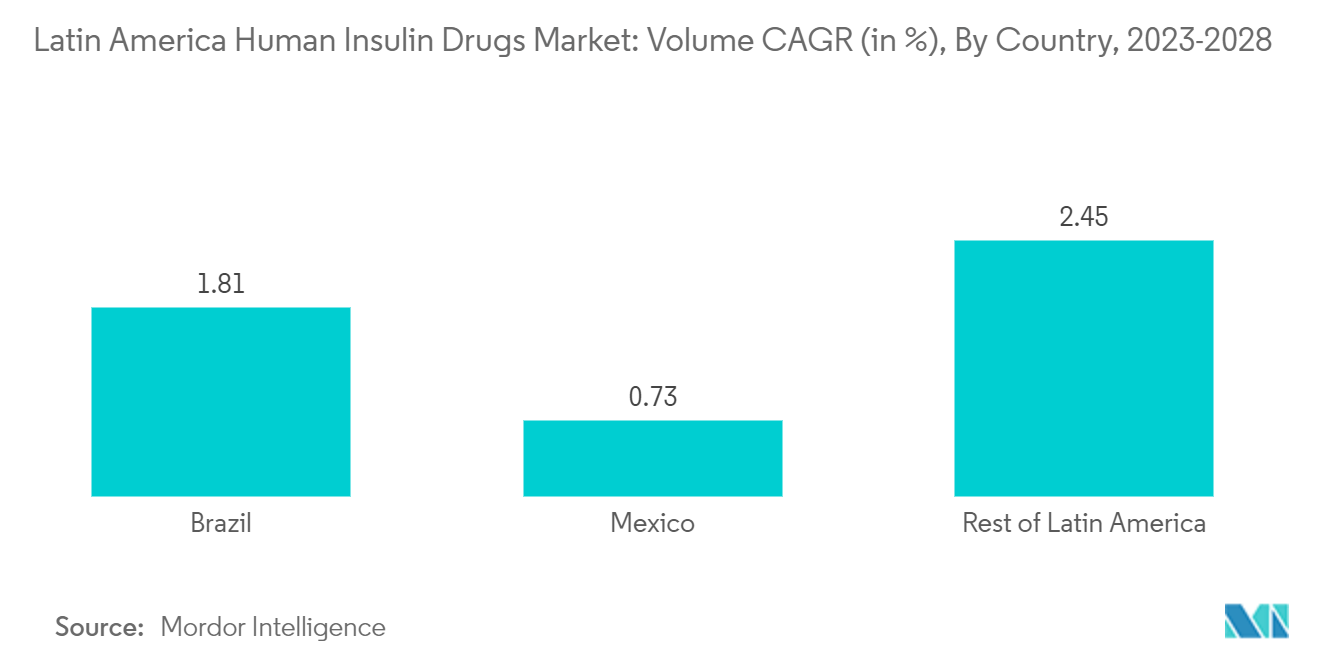Market Trends of Latin America Human Insulin Drugs Industry
Humalog Insulin Drug is Dominating the Latin America Human Insulin Drug Market in the current year
Humalog occupied the largest market share in the current year. However, the product is expected to decrease during the forecast period due to similar insulin glargine in the market, like FIASP and Admelog. Admelog is proven to lower A1C, similar to Humalog. Admelog is available in the Admelog SoloStar pen or a vial and can be used in a pump. The biosimilars for Humalog may not present it with competitive challenges currently. The loss of exclusivity for Humalog may not result in the near-term disruption of the market for it. According to the International Diabetes Federation, diabetes patients spent USD 966 billion in 2021, of which type-1 diabetes patients spent a major chunk on insulin drugs.
Few type-2 diabetes patients also depend on insulin. Although only 10% of the diabetes population is type-1, their insulin intake is higher in them. Demand for oral drugs is driven by increased awareness about the benefits of diabetes drugs for diabetes patients, especially in emerging economies. However, there will be additional pricing pressure and some loss of market share that will continue and may increase over time. Families in Latin America cover 40%-60% of the direct expenditures associated with diabetes. Most private health insurance policies do not cover medicine, but they cover hospitalization, operations, and medical support. In terms of epidemiology, Latin America is changing dramatically. The main health issues nowadays are chronic, non-transmissible disorders like diabetes. The financial resources allocated to diabetes care in this region are modest despite the high and rising number of diabetes patients.

Brazil is Expected to Dominate the North America Human Insulin Drugs Market over the forecast period
Among the Latin American countries, Brazil dominates the total Latin America Human Insulin Drugs Market. This is mainly due to the high diabetes prevalence in the country. In Brazil, the Brazilian health system is managed by each state and local health secretariat and is governed by the MOH. Furthermore, in many towns where the public sector cannot meet people's requirements, partnerships with private organizations have been put in place to increase access to PHC. The Brazilian health system in Brazil provides coverage to medicines through several programs that include a 20% expanded access to essential medicines. Brazil offers an extensive free immunization program. Brazil faced numerous lawsuits over the last 20 years, demanding the coverage of high-cost drugs to treat diabetes and certain rare or low-prevalence diseases.
According to Universal Health Coverage 2022, The four nations, including Argentina, Brazil, Colombia, and Mexico, achieved an overall index of essential coverage of 76-77 percent, with households spending less than 25 percent of their income on health care and expanding access to primary healthcare systems and coverage for noncommunicable illnesses enhanced service coverage, while a rise in the number of qualified healthcare personnel enabled community outreach.
Therefore, owing to the factors above, the growth of the studied market is anticipated in the Latin America Region.



